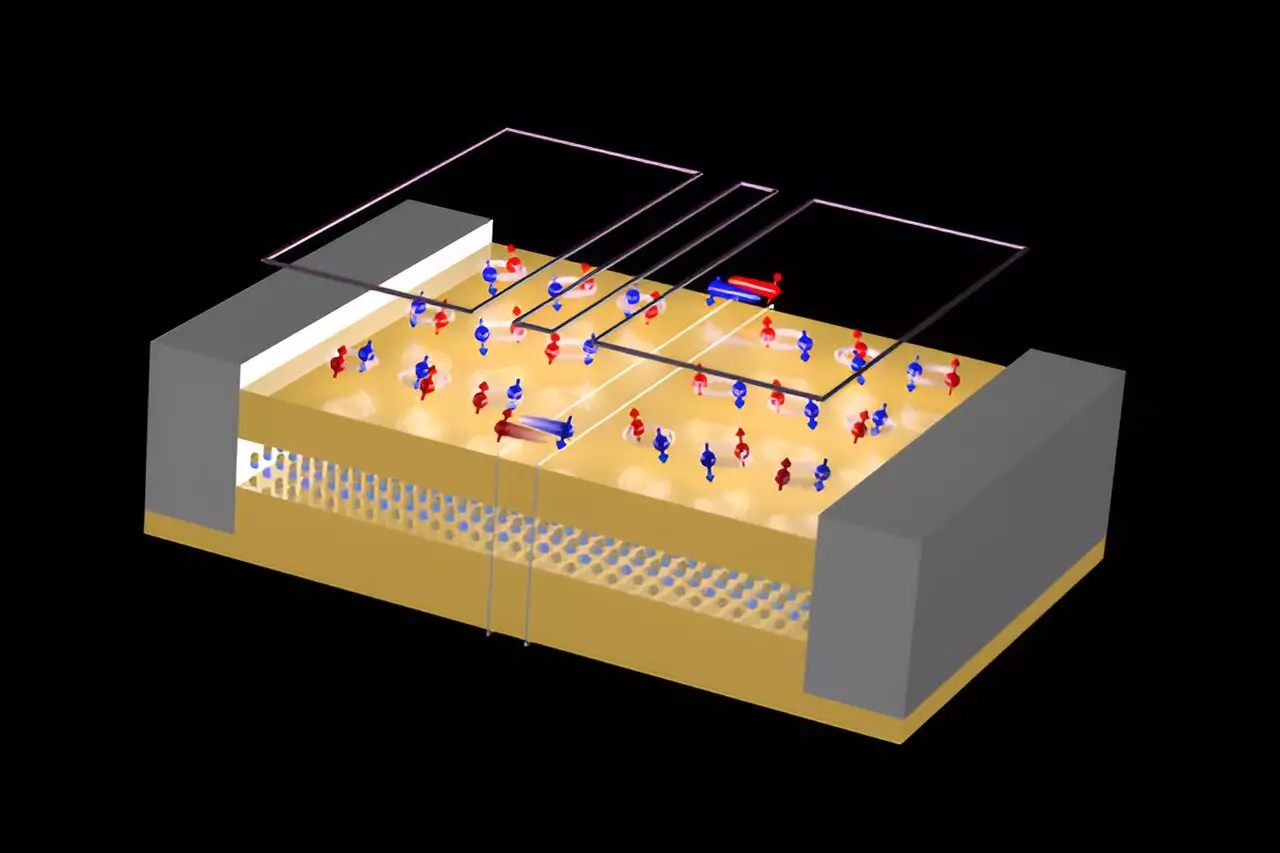Physicists at RIKEN have recently made significant progress in their exploration of unusual states of matter, with the potential for future applications in quantum computation. By harnessing the properties of ultrathin layers of materials, known as 2D materials, researchers are able to unlock exotic states that could revolutionize electronic devices.
When a material is reduced to an ultrathin layer, it undergoes a fascinating transformation, exhibiting properties vastly different from its thicker counterparts. By confining electrons to a 2D plane, unique states of matter, such as quantum spin Hall insulators, are created. These materials conduct electricity along their edges while remaining electrically insulating in their interiors. The compatibility of these 2D materials with existing semiconductor technologies makes them exceptionally promising for various electronic applications.
Creating a Quantum Spin Hall Insulator
In a groundbreaking study, Michael Randle and his team at the RIKEN Advanced Device Laboratory, alongside researchers from Fujitsu, have successfully developed a 2D Josephson junction entirely from a material known as monolayer tungsten telluride, which is a quantum spin Hall insulator. The traditional Josephson junction consists of a material sandwiched between two elemental superconductors, but Randle’s team took a different approach. Their device was fabricated using a single crystal of monolayer 2D tungsten telluride, with its superconducting state manipulated by electrostatic gating.
The Experimental Setup
To create the 2D Josephson junction, the team used thin layers of palladium to connect to the sides of the tungsten telluride layer. This layer was then surrounded and protected by boron nitride. The researchers observed an interference pattern in the sample’s magnetic response, indicating the presence of a Josephson junction with 2D superconducting leads.
While this study provides valuable insights into the complex superconductivity of 2D systems, there are challenges that need to be addressed. Tungsten telluride, the material used in this experiment, rapidly oxidizes under ambient conditions, making it difficult to process into devices. All fabrication had to be performed in an inert environment to avoid oxidation. The next step in this research involves the implementation of ultraflat pre-patterned gate structures, possibly through chemical-mechanical polishing.
This groundbreaking study opens up new avenues for understanding the potential applications of complex superconductivity in 2D systems. Further research is needed to fully explore the exotic physics offered by these systems. The ability to harness the properties of quantum spin Hall insulators in conjunction with superconductivity holds promise for the development of topological quantum computers.
The team at RIKEN Advanced Device Laboratory has made significant progress in exploring the unusual states of matter found in 2D materials for quantum computation. Through their innovative approach of creating a 2D Josephson junction using monolayer tungsten telluride, they have demonstrated the potential of these materials for future electronic devices. While challenges remain, the remarkable properties exhibited by these ultrathin layers make them an exciting area of research for the development of new technologies.


Leave a Reply